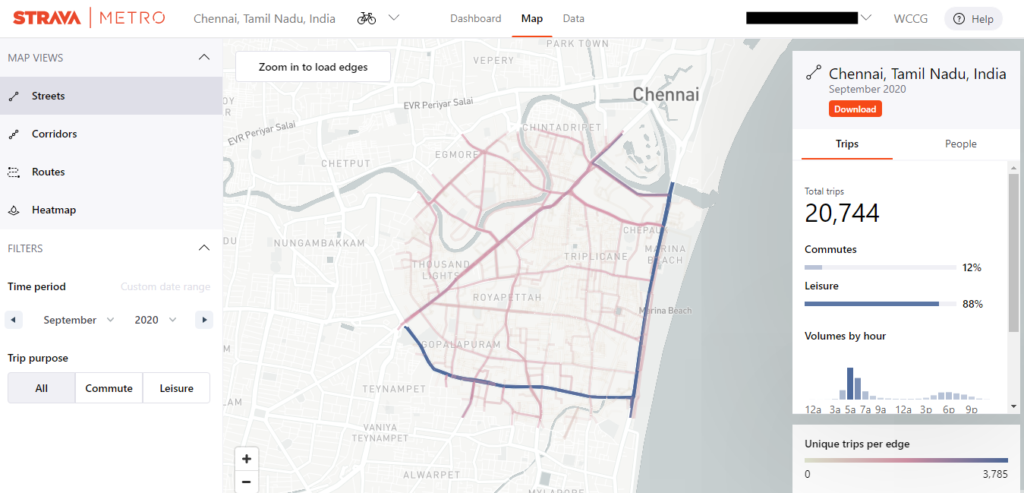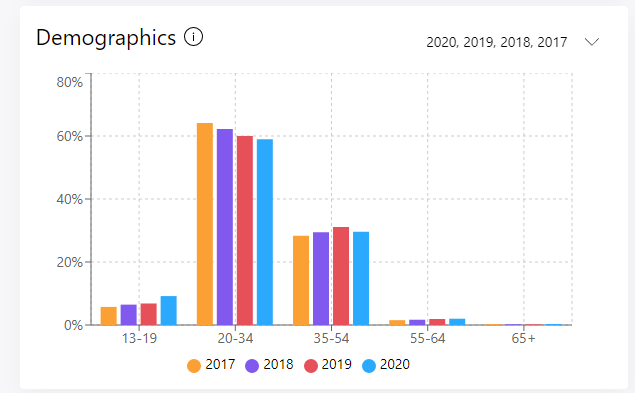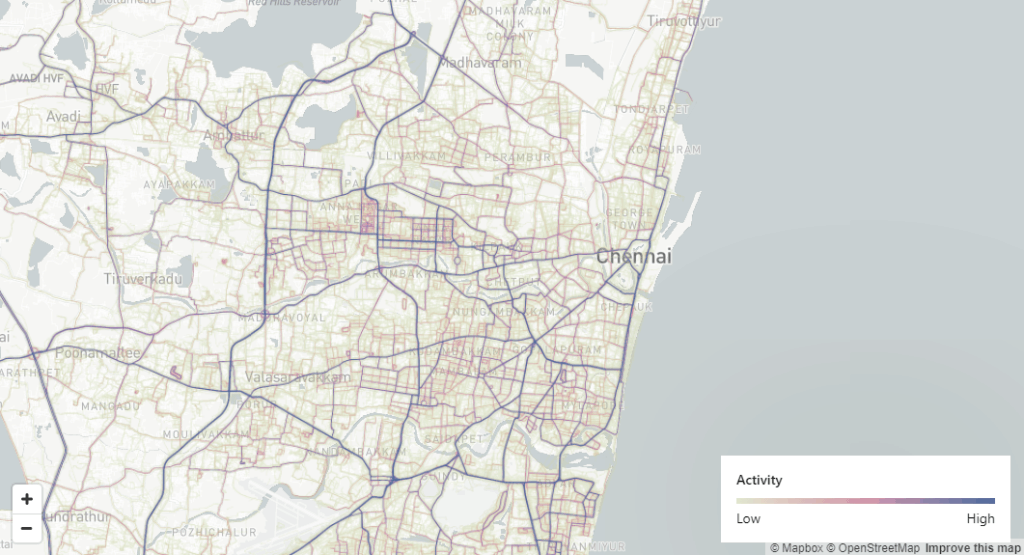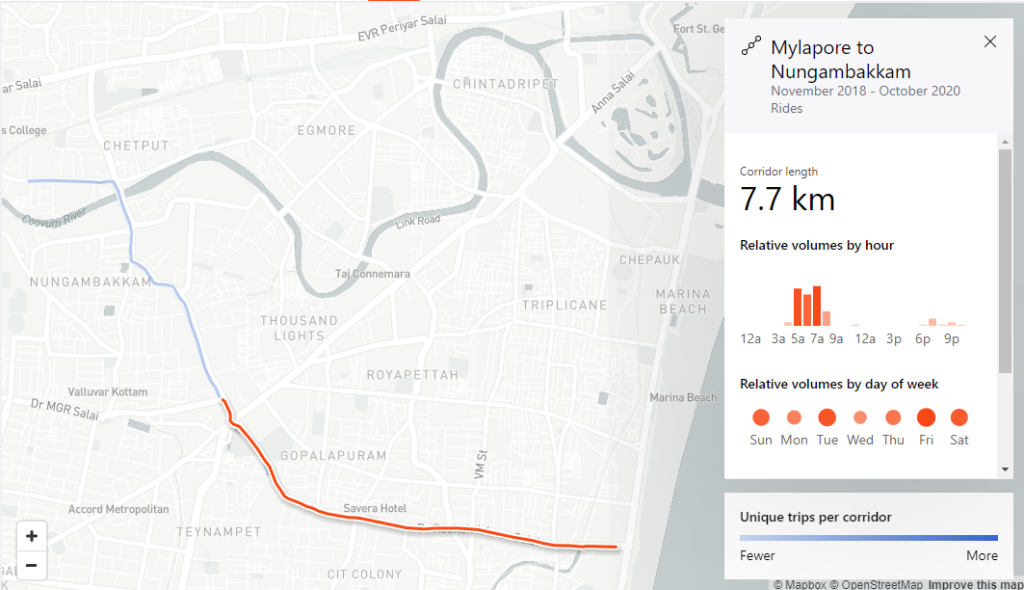Over the past few months, there appears to have been a marked improvement in the number of cyclists and the total trips taken in the city. This trend was gauged from the riding data of a subset of cyclists who use the popular service Strava.
The charts below have been drawn from the data collected by Strava Metro which helps cities improve infrastructure for cyclists and pedestrians. The data is provided by real time users who enable the app to track their ride. This data provides insight on the different corridors and the number of cyclists during the day.
Surge in trips

There has been a sharp increase in the total number of trips taken by cycle compared to the previous years. While some may be attributable to new riders using the app, the city has already seen over 33000 more trips by mid-September than it had all of last year.

The month of September alone has seen 20,744 trips, most of which have been labelled as leisure. The cyclists also display a preference for the early morning hours.
Age of cyclists

This year has seen a rise in young cyclists between the age group of 13-19 and older cyclists between 55-64. The trend for other age groups such as 20-34 and 35-54 has seen a slight decline from the last year.
Trips for commute

There has also been an increase in the total number of cyclists who use it as the primary mode of commute. While the year started on a strong note with more cyclists embracing it for commute, the numbers fell sharply during the total lockdown in April and May. With the unlock initiated in June, the number of trips for commute continued to rise and has shown a plateau in September.
Trips for leisure

Trips for leisure have seen an exponential increase, ever since the unlock phase. While the trend at the start of this year was similar to that of previous years, the rise has been sharp since June. As more and more people try to find an escape from the stifling indoors, cycling seems to be an activity being embraced that allows them to navigate the outdoors safely and get some fresh air and a workout.
City-wide grid

The arterial roads of the city have all seen a high intensity of cycling activity this year per the maps from Strava. These roads are long, wider and more suited for cycling as opposed to the narrower interior lanes.
Busiest routes



Three of the oft used routes by cyclists are mapped above. There are several corridors, such as RA Puram to Mylapore, Tidel to Kotturpuram, Annanagar etc that have seen robust activity.
The route between RK Salai to Nungambakkam will play an important connecting role between Kamarajar Salai & Gemini, given that Kamarajar Salai already hosts a protected bicycle lane from 6-8 am thanks to Greater Chennai Traffic Police who have come forward to protect the vulnerable cyclists.
Challenges and the road ahead
While the surge in bicycle ridership looks to be an encouraging factor for the city, it also brings a few challenges ahead. Few of these challenges involve addressing women’s safety, encroachments on the existing cycle lanes, motorbikes (and sometimes even cars, jaywalkers) using the cycle lane, unplanned maintenance and already existing potholes or missing tracks.
Apart from these immediate challenges, there has been a surge in over speeding by four-wheelers, which was also documented in the Chennai Smart City cycling preference survey.
In a recent blog, Hartwig Schafe – Vice President, South Asia Region, World Bank touched upon the importance of road safety, more so during COVID-19. The post talks about encouraging and protecting NMT users, more so during this dire time.
Amidst all these challenges that lie ahead we have a positive feeling knowing that authorities such as the Ministry of Housing & Urban Affairs, Smart Cities Mission, Greater Chennai Traffic Police, Greater Chennai Corporation and Chennai Smart City are heading in the right direction by protecting the vulnerable users on road.
In a recent discussion with Dr. N. Kannan – Additional Commissioner of Police, Traffic together with the Chennai cyclists & Institute for Transportation and Development Policy (ITDP) we brought up these challenges and temporary measures to sustain the growth of ridership.
To ensure community engagement to build back better Chennai we also opened up discussion for volunteer support in their initiatives for NMT. We received a promise that there will be support extended to the non-motorised transport users.
The pop-up cycle lane in Kamaraj Salai has seen a positive response, with requests by cyclists to ensure dedicated bicycle lanes are established on all possible arterial roads.
The efforts by the authorities and the promising trends shown by the charts could indicate that Chennai could be primed for a cycling revival.